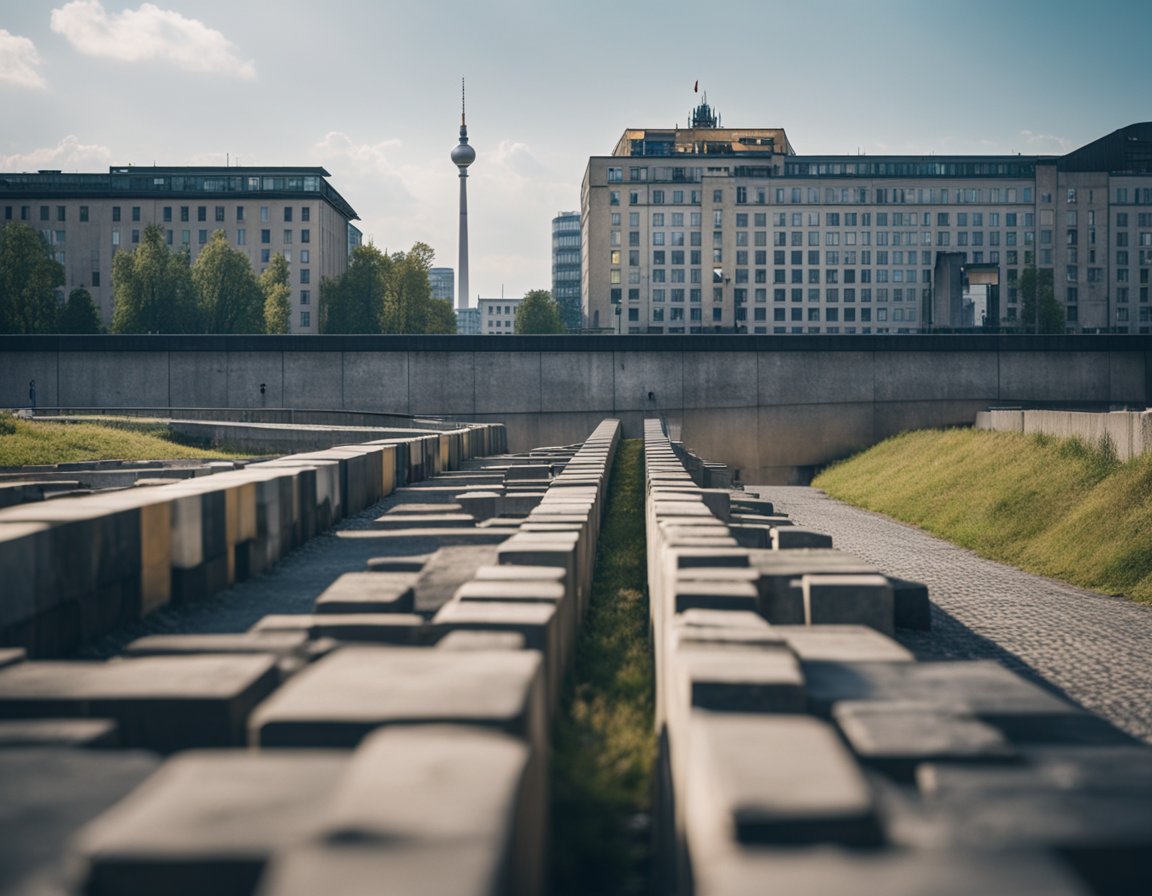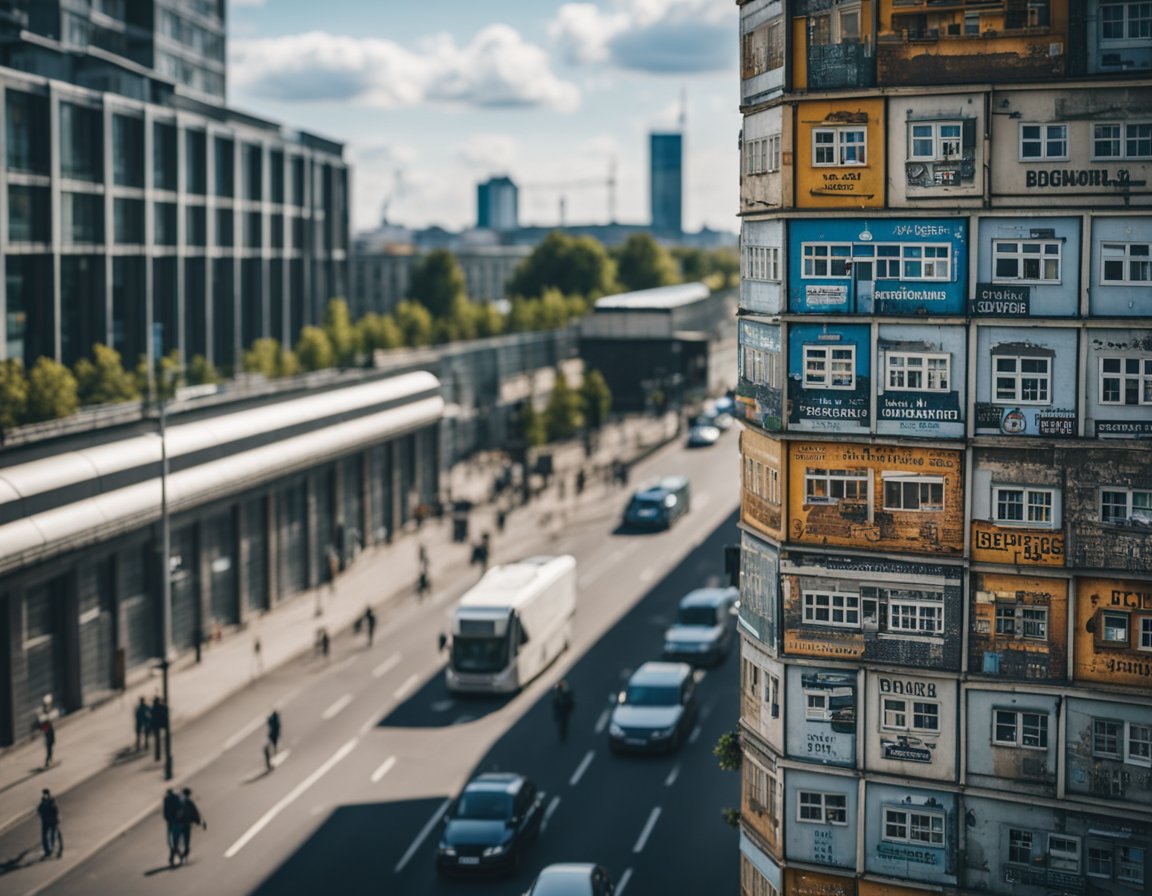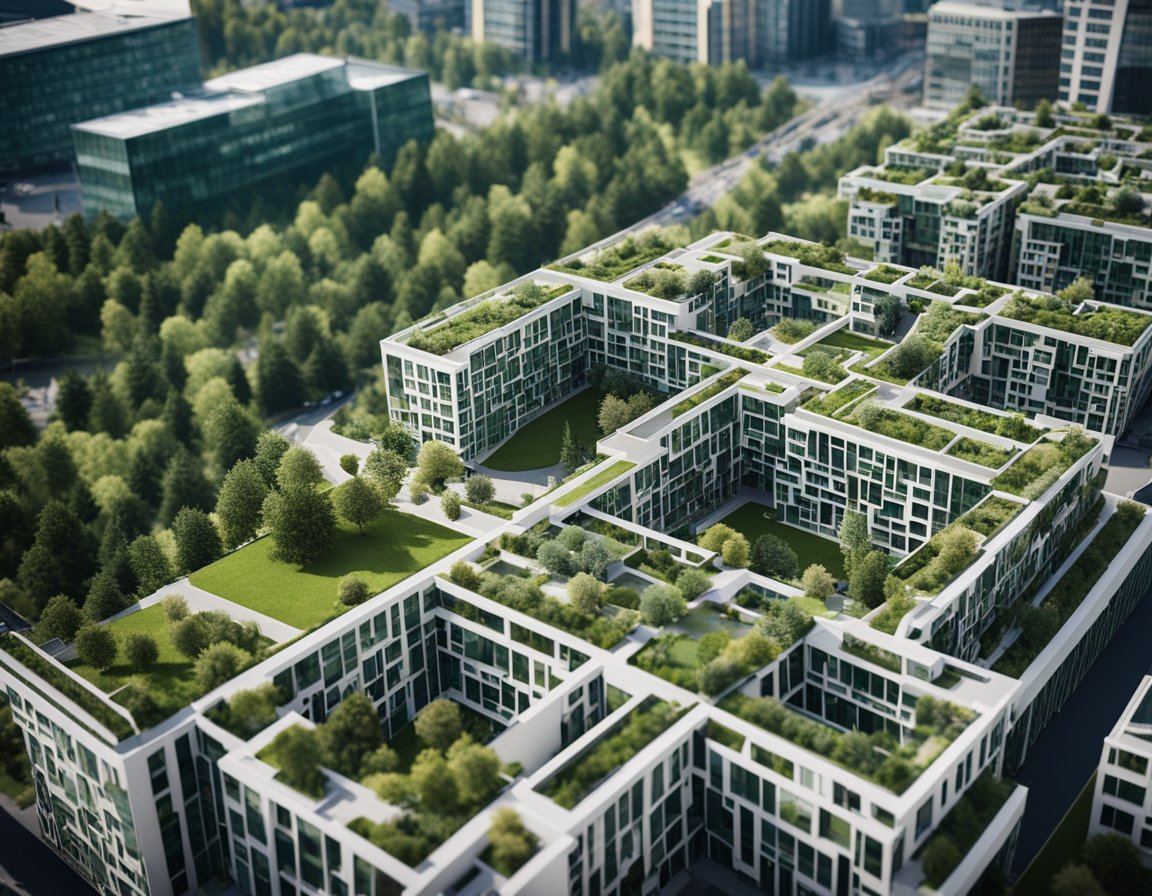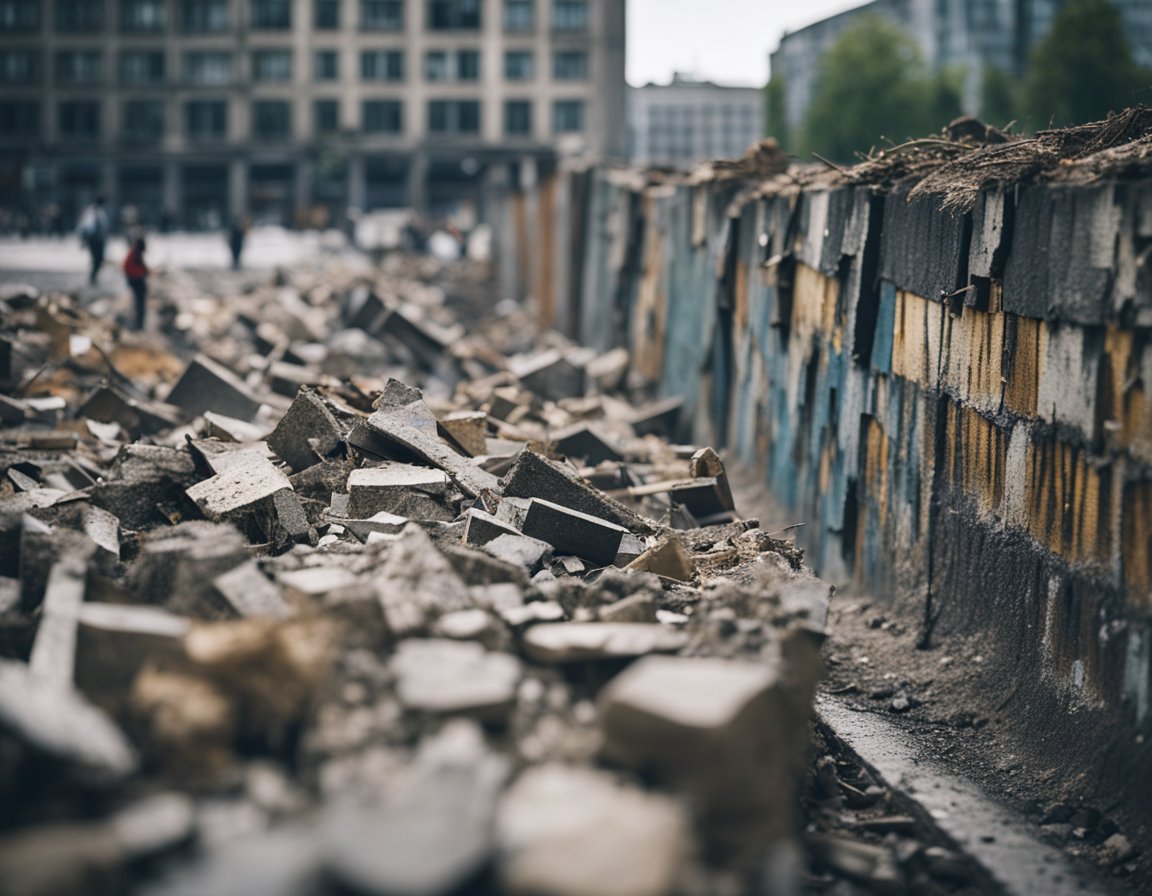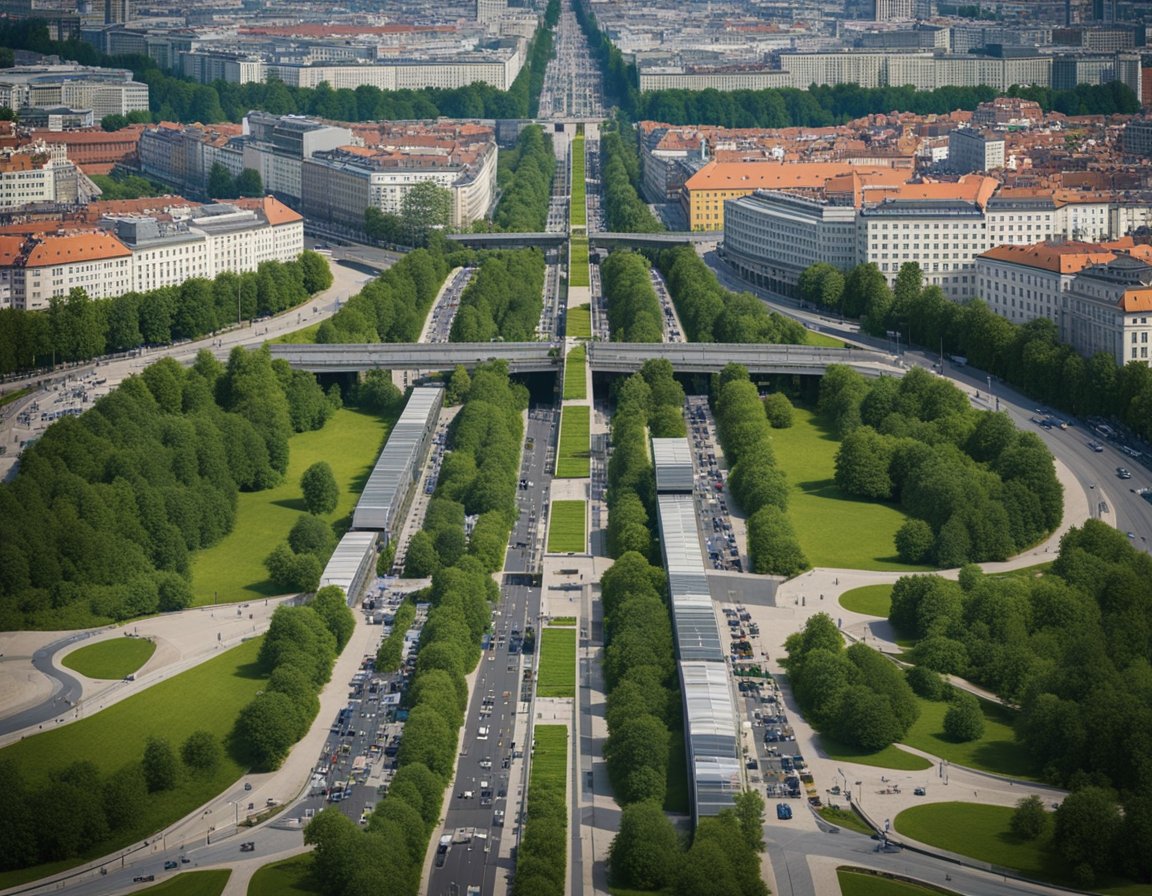The Berlin Wall, a stark symbol of the Cold War, once split the German capital into East and West, shaping the urban landscape in a profound manner.
Its fall in 1989 marked a significant turning point, paving the way for urban development and reunification.
The wall’s remnants now stand as a testament to the city’s turbulent past and the resilience that led to its transformation.
Urban planners and policymakers have since leveraged this unique opportunity to blend historical significance with contemporary growth, fostering a cityscape that resonates with dynamic change and progress.
This rapidly evolving environment following the removal of the Berlin Wall presented both challenges and opportunities for urban development.
Areas that were once separated by concrete and barbed wire became canvases for innovation and social integration. Initiatives focused on rejuvenating the infrastructure, redefining public spaces, and enhancing the quality of life for residents on both sides of the former divide. The policies implemented aimed to address discrepancies in building conditions and to stimulate the real estate market, thus contributing to Berlin’s reputation as a modern metropolis enriched by its diverse societal fabric.
The impact of the Berlin Wall on urban development extends far beyond the boundaries of the former barrier.
It serves as a blueprint for urban regeneration, illustrating how historical divisions can lead to progressive planning strategies. Berlin’s approach to urban renewal is characterized by a strategic blending of historical preservation with economic incentives, resulting in an urban identity that reflects both its past and its future potential.
The lessons gleaned from Berlin’s experience continue to inform urban development on a global scale, emphasizing the importance of adaptability and intentionality in city planning.
Historical Context and Urban Division
The division of Berlin after World War II had profound implications for its urban landscapes, impacting the city’s infrastructure and development patterns.
Berlin During the Cold War
During the Cold War, Berlin stood as a city divided by ideologies – a focal point for the struggles between the Soviet Union and the Western Bloc. The Allied powers partitioned Germany and its capital Berlin into four occupation zones. The Eastern part, including half of Berlin, became known as East Germany (GDR), led by the Socialist Unity Party (SED), and emerged as a socialist state under Soviet influence. In contrast, West Germany fostered a market economy backed by the US, UK, and France, with West Berlin evolving as an enclave of Western influence amidst a Soviet-dominated East.
The Impact of the Berlin Wall on Urban Landscape
Erected in 1961, the Berlin Wall symbolized the “Iron Curtain” that separated East and West Germany. Extending around West Berlin, the Wall effectively isolated it from the GDR and East Berlin. Its presence distorted urban connectivity, as thoroughfares were severed, and neighbors found themselves split by the formidable barrier. The Wall’s construction led to a significant reorientation of urban activities, with West Berlin looking to the West for its economic and infrastructural development, whereas East Berlin focused on adhering to Soviet-centric planning principles.
Infrastructure and City Planning Pre-Reunification
Prior to reunification, West Berlin’s infrastructure and city planning had to adapt to its unique geopolitical situation. Ensuring self-sufficiency amidst isolation necessitated innovative urban solutions. Consequently, urban developments in the West skewed towards creating self-contained neighborhoods and strengthening local economies. East Berlin, under the GDR, followed a more centralized planning approach, with a focus on showcasing socialist ideals through monumental architecture and standardized housing blocks.
The Fall of the Wall in 1989 underscored a profound turning point, setting the stage for the reunification of Germany and a massive reimagining of Berlin’s urban landscape.
Post-Wall Urban Development
After the fall of the Berlin Wall, the city experienced significant urban development, marked by strategic initiatives and planning that aimed to reintegrate and revitalize its urban fabric. The process addressed the infrastructural gaps, population shifts, and development of new business districts.
Reunification and Its Effects on Urban Spaces
The reunification of Berlin in 1990 had transformative effects on the city’s urban spaces. Previously divided, the city saw a major shift towards integrating transport, utility networks, and housing across the former East and West Berlin. The population distribution adjusted as people migrated within the newly accessible city areas, prompting a balanced development approach focused on social and economic cohesion.
Modern Urban Planning Initiatives
Modern urban planning in post-wall Berlin prioritized sustainable growth, with efforts such as the First Berlin Renewal Program drastically transforming cityscapes. A mix of residential and commercial buildings emerged, particularly in the central business district, with an emphasis on preserving cultural heritage while promoting modern infrastructure.
Development of Key Districts
Potsdamer Platz and Mitte emerged as notable examples of post-wall urban development. Potsdamer Platz, previously desolate near the Wall’s death strip, became a vibrant commercial hub, while Mitte, the historic heart of Berlin, reinvented itself as a blend of historic sites, governmental buildings, and contemporary spaces. Checkpoint Charlie, once a symbol of division, now sits amidst a district bustling with tourists and new development projects, illustrating Berlin’s continuous evolution.
Economic Transformation and Opportunities
The fall of the Berlin Wall was a pivotal moment that paved the way for significant economic transformation within the city, creating new opportunities for market economy initiatives, shifts in real estate, and improvements in employment and productivity.
Transition to Market Economy
After the Berlin Wall’s fall, Berlin undertook the challenging process of transitioning from a Soviet-style planned economy to a market-driven economy. The Allied Powers and the former Soviet Union influenced this transition, which significantly altered the city’s economic activity. These changes facilitated an agglomeration of new businesses and services, fostering a dynamic business environment.
Real Estate Dynamics
In the wake of reunification, property prices and rents in Berlin experienced fluctuations. Priority was placed on urban renewal efforts, particularly in the areas that were previously divided, leading to an increase in both residential and commercial property values. Housing conditions and availability saw improvement, and a policy evaluation suggested a gradual increase in the quality of buildings within targeted areas.
Employment and Productivity Growth
As Berlin’s economy shifted, there was a marked growth in employment opportunities, enhancing the city’s economic vitality. Economic functions became more concentrated in certain areas of the city, similar to the agglomeration seen in cities like New York and London. This led to increased productivity and supported a diverse economy, becoming a cornerstone of Berlin’s economic landscape.
Cultural and Social Evolution
The fall of the Berlin Wall not only transformed the urban landscape of Berlin but also initiated profound shifts in cultural expressions and social dynamics.
Art and Graffiti as Symbols of Change
Once a barrier that represented division, the Berlin Wall became a canvas for artistic rebellion and cultural dialogue. Artists like Thierry Noir and Keith Haring contributed iconic graffiti works that symbolized the thirst for freedom. Noir’s colorful silhouettes and Haring’s interconnected human figures are still celebrated as early representations of Cultural Identity reclaiming a space marked by segregation.
- Thierry Noir: Known for being one of the first to paint the wall, creating simplistic, colorful silhouettes that were both a form of protest and an assertion of freedom.
- Keith Haring: His mural on the wall, painted in 1986, depicted chained human figures breaking free, symbolizing the desire for unity and liberty.
Public Spaces and Community Development
The area where the Berlin Wall once stood has been repurposed into vibrant parks and green spaces, fostering community interaction and growth. Landmarks such as the Brandenburg Gate and Checkpoint Charlie have transitioned from symbols of division to places of gathering and historical reflection.
- Brandenburg Gate: A historical site that became a powerful symbol of unity when crowds gathered here during Ronald Reagan’s 1987 speech, which famously demanded, “Mr. Gorbachev, tear down this wall!”
- Green Spaces: The transformation of the death strip into a network of parks illustrates Berlin’s commitment to creating communal areas that promote cultural exchange and environmental sustainability.
The reintegration of these spaces has been instrumental in Berlin’s cultural and social evolution post-1989, facilitating a cityscape that embraces its historical narrative while looking toward a collaborative future.
Urban and Environmental Sustainability
Urban development in Berlin has shown a strong inclination towards environmental sustainability, with particular emphasis on incorporating green infrastructure and balancing urbanization with biodiversity.
Incorporating Green Infrastructure
Berlin has become a leading city in embedding green infrastructure into its urban fabric. The transformation of the area surrounding the former Berlin Wall into a “Green Belt” epitomizes this initiative. This belt now serves as an extensive open space network, demonstrating how agglomeration and dispersion forces shape urban landscapes in innovative ways.
- Tempelhof Airport, once an airfield, exemplifies a unique approach to sustainable development. The airport has been repurposed into one of Berlin’s largest open spaces, providing accessible green space to the populace and mitigating congestion costs typically associated with urban density.
Balancing Urbanization with Biodiversity
Berlin’s push towards urban density has been counterbalanced by a pivotal commitment to biodiversity. Strategies have been deployed to ensure that development does not encroach on the habitat of local fauna and flora.
- Urban woodlands and meadows have been integrated within the city, which not only offers a refuge for wildlife but also enhances access to green space for residents. Research into urban ecology in areas like Südgelände Park has uncovered surprising species diversity, confirming green spaces as critical to the urban ecosystem.
Frequently Asked Questions
This section explores commonly asked questions surrounding the impact of the Berlin Wall on the city’s urban development, as well as the ongoing efforts to adapt and sustain its urban landscape.
What were the primary influences on urban development in Berlin post the Wall’s fall?
After the fall of the Berlin Wall, urban development in Berlin was greatly shaped by the need to integrate the eastern and western parts of the city. This integration process was characterized by the construction of new infrastructure and the renovation of public spaces to foster economic and social unity.
How did the location of the Berlin Wall affect the city’s urban planning?
The location of the Berlin Wall created a division that severely affected urban planning. It resulted in two distinct urban areas with different developmental patterns. Post-fall, the city had to address the disparities and re-think urban spaces to reconnect the previously separated areas.
What role did The Nature Conservancy play in shaping the urban landscape of Berlin?
The Nature Conservancy has played a part in Berlin’s urban evolution by addressing environmental challenges that come with urban renewal. Their involvement often includes projects focusing on climate adaptation and sustainable practices within the city’s development plans.
What strategies did Berlin implement to address urbanization and environmental concerns?
Berlin has implemented strategies such as green spaces, eco-friendly transportation, and energy-efficient buildings to address urbanization and its environmental impact. These initiatives are aimed at creating a sustainable urban environment that balances growth with ecological considerations.
In what ways has Berlin’s urban landscape changed since reunification?
Since reunification, Berlin’s urban landscape has undergone extensive changes, with former border areas becoming new centers for culture and business. Investments in infrastructural modernization and public projects have transformed these areas into vibrant urban spaces.
What are some key examples of sustainable urban development projects in Berlin?
Key examples of sustainable urban development projects in Berlin include the Energieforum Innovation Berlin, which focuses on renewable energy and technology, and the Park am Gleisdreieck, which is a green space created on former railway land, promoting biodiversity and recreational activities.
Social Fabric and Urban Planning: Bridging the Gap After the Wall
The fall of the Berlin Wall marked a remarkable phase of urban reinvention concerning both the physical landscape and social dynamics of Berlin. With new developments springing up, the metropolis is witnessing a convergence of communities fostered by descending unemployment rates and the emergence of startups. This fresco of change paints a picture of a city determined to thread the past with its vibrant future.
In the knitting together of East and West Berlin, urban planning plays a pivotal role in maintaining the city’s unique community identity. The locational decisions and architectural designs are not merely functional but narrate the history and evolution of Berlin’s culture. As the cityscape transforms, so does the mosaic of its inhabitants, where a multitude of languages reflects a testament to diversity.
Moreover, Berlin grapples with gentrification and urban sprawl—phenomena common to cities undergoing rapid economic shifts. The influx of new establishments and residential projects propels changes in the socio-economic tapestry, occasionally straining the fabric of long-standing neighborhoods. The evolution of ‘New Berlin’ embodies a complex blend of modernity and nostalgia, where historic enclaves intersperse with contemporary edifices.
- The Impact of Urban Planning:
- Preserves historical memory
- Cultivates modern business ecosystems
- Informs community redevelopment
- Gentrification and Urban Sprawl:
- Alters localized demographic compositions
- Introduces new social classes
- Renews urban infrastructure
As Berlin’s urban sprawl extends, it’s essential to tailor developments that harmonize with existing communities, supporting sustainable growth while respecting the storied past. This includes facilitating dialogues between long-term residents and newcomers, investing in local culture, and ensuring economic benefits are evenly reaped. Through mindful urban design and policies, Berlin aspires to bridge the historical divisions and craft a harmonious urban environment for all its residents.
